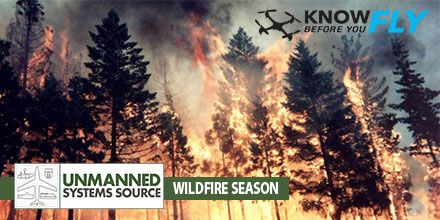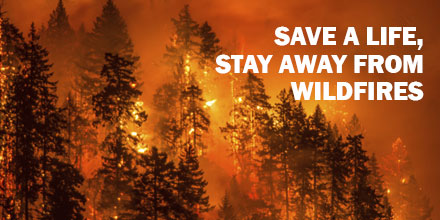 "Know Before You Fly" Urges Operators to Stay Away from Wildfires, Adhere to Temporary Flight Restrictions
"Know Before You Fly" Urges Operators to Stay Away from Wildfires, Adhere to Temporary Flight Restrictions
WASHINGTON — The Know Before You Fly campaign today urged operators of unmanned aircraft systems (UAS) to respect temporary flight restrictions (TFRs) over and around wildfires as this year’s wildfire season makes an early start.
Wildfires or other hazardous conditions often lead to authorities putting in place TFRs, which allow first responders to do their jobs unimpeded and without danger to their aerial support.
Temporary Flight Restrictions
Violating the TFR may endanger the safety of the operation, and in some cases may ground search and rescue crews until the airspace is cleared, allowing the wildfire to spread. But TFRS do not just apply to wildfires.
For stadium events ranging from concerts to NASCAR races to the Super Bowl, model aircraft flights and unmanned aircraft operations are generally restricted. More information about the types of TFRs may be found here.
To check for TFRs in your area, visit the FAA TFR list at http://tfr.faa.gov/tfr2/list.html. Additionally, download the FAA’s B4UFLY app, available on the App Store or Google Play, to find up-to-date information on TFRs.
No one should be flying within a TFR that restricts UAS and/or model aircraft operations.
Standard flight guidelines for operators
At all other times when flight is permitted, Know Before You Fly would like to remind recreational flyers to follow these guidelines to keep the skies safe for all:
- Fly no higher than 400 feet
- Fly within visual line of sight
- Stay well clear of other aircraft
- Never fly within 5 miles of an airport without contacting airport authorities or air traffic control
- Keep well away from emergency response efforts, such as fires
- Beware of FAA airspace requirements (http://www.faa.gov/uas/tfr/)
- Don’t fly under the influence
- Register your device before your first flight (http://knowbeforeyoufly.org/register-your-drone/)
If you are flying for commercial purposes, please adhere to the FAA small UAS regulations, which can be found here.
Know Before You Fly was launched by the Association for Unmanned Vehicle Systems International (AUVSI) and the Academy of Model Aeronautics (AMA) in partnership with the FAA with the goal of spreading awareness about safe and responsible use of UAS. For more information on safe and responsible flying, visit KnowBeforeYouFly.org or follow @FlyResponsibly on Twitter.
 If you fly your drone anywhere near a wildfire, you could get someone killed.
That’s the stern warning the Federal Aviation Administration (FAA) and U.S. wildland fire agencies have for pilots of unmanned aircraft who interfere with fighting wildfires.
Unauthorized drone flights are a serious risk to first responders and anyone in the fire’s path.
If you fly your drone anywhere near a wildfire, you could get someone killed.
That’s the stern warning the Federal Aviation Administration (FAA) and U.S. wildland fire agencies have for pilots of unmanned aircraft who interfere with fighting wildfires.
Unauthorized drone flights are a serious risk to first responders and anyone in the fire’s path.

 "Know Before You Fly" Urges Operators to Stay Away from Wildfires, Adhere to Temporary Flight Restrictions
"Know Before You Fly" Urges Operators to Stay Away from Wildfires, Adhere to Temporary Flight Restrictions 